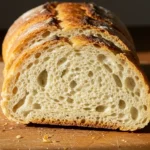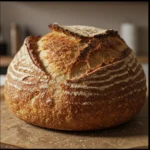If you’re looking to make better choices for your daily diet, switching to whole wheat bread might be one of the simplest yet most powerful decisions. This article dives deep into everything you need to know about whole wheat bread from how it’s made to why it’s better than most alternatives. You’ll discover its nutritional benefits, how to make it from scratch, common mistakes to avoid, and smart ways to store and serve it. Whether you’re a seasoned home baker or just beginning to explore healthier foods, this guide will help you master the art and science of whole wheat bread.
Don’t miss our ultimate guide to healthy baking ingredients to learn more about ingredients that complement whole grains perfectly.
Let’s begin with the very foundation how to make whole wheat bread at home.
Table of Contents
Table of Contents
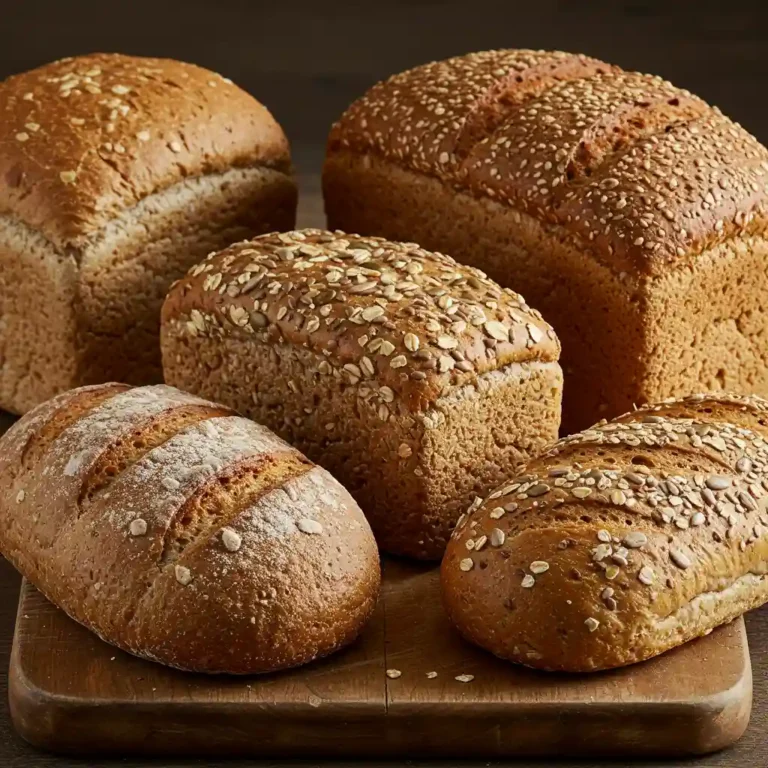
Whole Wheat Bread: The Ultimate Healthy Choice You Can’t Ignore
This homemade whole wheat bread is soft, fluffy, and packed with fiber and nutrients. Made with 100% whole wheat flour and a touch of honey, it’s the perfect healthy loaf for everyday meals — sandwich-ready and heart-healthy.
- Total Time: 50 minutes
- Yield: 1 standard loaf
Ingredients
3 ½ cups 100% whole wheat flour
1 ¼ cups warm water (110°F)
2 tablespoons honey or maple syrup
2 tablespoons olive oil
1 packet (2 ¼ tsp) active dry yeast
1 teaspoon salt
Optional: 1 tablespoon ground flaxseed or chia seeds for extra fiber
Instructions
Activate the yeast: In a bowl, combine warm water and honey. Stir in the yeast and let it sit for 5–10 minutes until frothy.
Make the dough: Add olive oil, salt, and 2 cups of whole wheat flour. Mix until smooth. Gradually stir in the remaining flour until dough forms.
Knead: Turn onto a lightly floured surface. Knead for 8–10 minutes until elastic and smooth.
First rise: Place dough in an oiled bowl, cover, and let rise in a warm place for 1 hour or until doubled in size.
Shape and second rise: Punch down the dough, shape into a loaf, and place in a greased 9×5 loaf pan. Cover and let rise for another 30–40 minutes.
Bake: Preheat oven to 375°F (190°C). Bake for 30–35 minutes until the top is golden brown and it sounds hollow when tapped.
Cool and serve: Let cool on a wire rack for at least 15 minutes before slicing. Enjoy!
Notes
You can substitute maple syrup for honey for a vegan version.
Add sunflower or pumpkin seeds on top before baking for extra crunch.
Store wrapped at room temperature for up to 3 days, or freeze for longer storage.
- Prep Time: 15 minutes
- Cook Time: 35 minutes
- Category: Bread
- Method: Baking
- Cuisine: American
Nutrition
- Serving Size: 1 slice
- Calories: 150
- Sugar: 2g
- Sodium: 180mg
- Fat: 4g
- Saturated Fat: 0.5g
- Unsaturated Fat: 3g
- Trans Fat: 0g
- Carbohydrates: 25g
- Fiber: 4g
- Protein: 5g
- Cholesterol: 0mg
What Is Whole Wheat Bread?
Whole wheat bread is a popular and nutritious type of bread made from whole grain wheat flour. Unlike white bread, which uses refined flour stripped of bran and germ, whole wheat bread contains all parts of the wheat kernel — including the bran, germ, and endosperm. This means it holds more fiber, vitamins, and minerals than many other types of bread. For anyone looking to eat healthier, understanding what whole wheat bread is and why it’s different is a great first step.
Understanding Whole Wheat Bread and Its Ingredients
Whole wheat bread primarily uses whole wheat flour, which is milled from the entire wheat kernel. This flour includes the bran, germ, and endosperm, giving the bread a denser texture and richer flavor compared to white bread. Besides flour, typical ingredients include water, yeast, salt, and sometimes a small amount of sugar or honey to help with fermentation. Some recipes add healthy fats like olive oil or butter to improve the bread’s softness and shelf life.
The presence of the bran and germ means whole wheat bread contains more fiber and nutrients like B vitamins, iron, magnesium, and antioxidants. Fiber helps with digestion and keeps you feeling full longer, which is one reason whole wheat bread is often recommended in healthy diets.
How Whole Wheat Bread Differs from White Bread
The main difference between whole wheat bread and white bread lies in the flour used. White bread is made from refined wheat flour that has had the bran and germ removed, leaving mostly the starchy endosperm. This refining process strips away much of the fiber and nutrients, making white bread less nutritious.
Whole wheat bread’s denser texture and darker color come from the bran and germ left intact. This also affects the bread’s flavor, giving it a nuttier and slightly sweeter taste. While white bread tends to be softer and fluffier, whole wheat bread offers more health benefits due to its nutrient content.
Choosing whole wheat bread over white bread can help increase your daily fiber intake and provide essential nutrients missing in refined bread. For many, whole wheat bread is a simple way to enjoy bread while supporting a balanced and nutritious diet.
Health Benefits of Whole Wheat Bread
Whole wheat bread is more than just a tasty staple; it packs a powerful nutritional punch that supports overall health. In this section, we’ll dive deep into the key health benefits of whole wheat bread, showing why it’s often considered a smart choice for those aiming for a balanced diet.
Rich Source of Dietary Fiber
One of the biggest advantages of whole wheat bread is its high fiber content. Since it’s made from the entire wheat kernel, including the bran, whole wheat bread delivers significantly more fiber than white bread. Dietary fiber helps regulate digestion, promotes regular bowel movements, and can reduce the risk of chronic diseases like heart disease and type 2 diabetes. Eating fiber-rich foods like whole wheat bread also helps control blood sugar levels by slowing sugar absorption into the bloodstream.
Packed with Essential Nutrients and Vitamins
Whole wheat bread is loaded with vital nutrients that contribute to your daily needs. It contains B vitamins such as niacin, thiamine, and riboflavin, which play a key role in energy metabolism and brain health. Minerals like iron, magnesium, and zinc are also abundant in whole wheat bread. Magnesium, in particular, supports muscle and nerve function and helps maintain healthy blood pressure. These nutrients work together to boost your overall well-being, making whole wheat bread a nutrient-dense choice compared to refined bread varieties.
Supports Heart Health and Cholesterol Management
Whole wheat bread can play a role in heart health, thanks mainly to its fiber content and antioxidant compounds. Soluble fiber found in whole grains helps lower LDL (bad) cholesterol levels by binding to cholesterol in the digestive tract and removing it from the body. Additionally, antioxidants in the wheat germ can reduce inflammation, which is linked to cardiovascular disease. For people managing high cholesterol, incorporating whole wheat bread into their diet may be a heart-friendly option compared to breads made from refined flour.
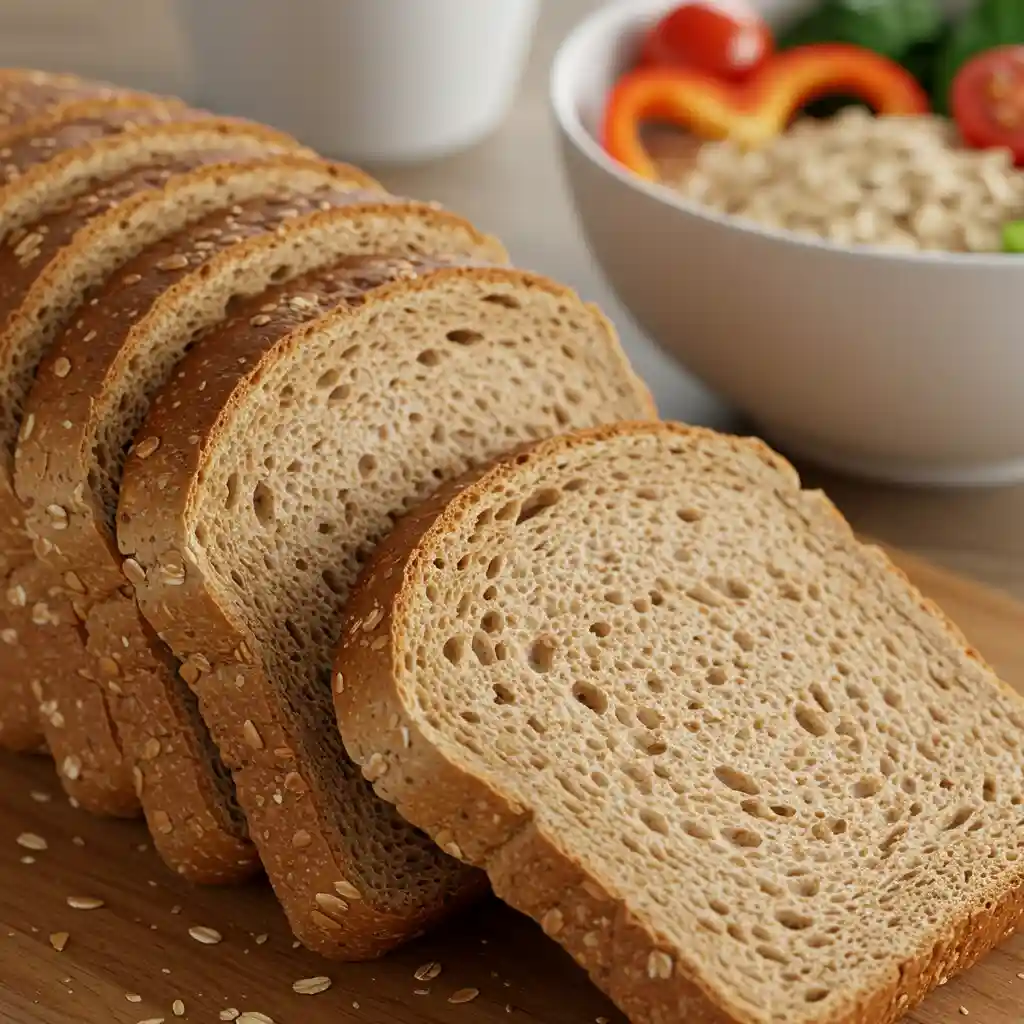
How to Choose the Best Whole Wheat Bread
Choosing the best whole wheat bread at the store can be tricky with so many options available. In this section, we’ll guide you through the key factors to consider when selecting whole wheat bread to ensure you get the healthiest, most authentic product.
Understanding Labels: What Does “Whole Wheat” Really Mean?
Not all bread labeled “whole wheat” is 100% whole wheat. Some loaves may contain a mix of whole wheat and refined flours. To pick the best bread, check the ingredient list carefully. Look for “100% whole wheat flour” as the first ingredient. Avoid breads that list “wheat flour” without “whole” before it, as these are usually refined and lack the bran and germ that provide fiber and nutrients. Also, watch out for added sugars and preservatives that can reduce the health benefits.
Comparing Whole Wheat Bread to Other Whole Grain Breads
Whole wheat bread is one type of whole grain bread, but others include whole rye, spelt, and multigrain breads. While these can be nutritious, whole wheat bread tends to be more widely available and familiar. When comparing, choose breads with whole grains listed as the main ingredient, not enriched or refined flours. Multigrain breads may sound healthy but sometimes use refined grains, so always check the label.
Tips for Buying Fresh and Quality Whole Wheat Bread
Freshness affects both taste and nutrition. Whole wheat bread without preservatives may have a shorter shelf life, but it often means fewer additives. Check the packaging date or ask your bakery about freshness. Organic whole wheat breads are another good option if you want to avoid pesticides. If possible, buy from local bakeries or stores that bake daily for the freshest loaf.
Nutritional Benefits of Whole Wheat Bread
Whole wheat bread offers a wealth of nutritional advantages compared to white or refined breads. In this section, we’ll explore what makes whole wheat bread a smart choice for your diet, focusing on its vitamins, minerals, fiber, and overall health impact.
Key Nutrients Found in Whole Wheat Bread
Whole wheat bread is packed with essential nutrients. Because it’s made from the entire wheat kernel—the bran, germ, and endosperm—it contains more fiber, vitamins, and minerals than refined breads. Some of the key nutrients include B vitamins (like niacin, thiamine, and folate), iron, magnesium, and zinc. These nutrients support energy metabolism, red blood cell production, and immune function.
The Importance of Fiber in Whole Wheat Bread
One of the biggest benefits of whole wheat bread is its high fiber content. Fiber helps improve digestion, promotes a feeling of fullness, and can aid in weight management. It also supports heart health by lowering cholesterol levels. Eating whole wheat bread regularly boosts your daily fiber intake compared to white bread, which usually loses most of its fiber during processing.
How Whole Wheat Bread Supports Heart Health and Blood Sugar Control
Whole wheat bread has a low glycemic index compared to white bread, meaning it causes a slower, steadier rise in blood sugar levels. This helps in managing blood sugar, making it a better option for people with diabetes or insulin resistance. Moreover, the fiber and antioxidants in whole wheat bread contribute to reducing LDL cholesterol, lowering the risk of heart disease.
Table: Nutritional Comparison of Whole Wheat Bread vs. White Bread (per slice)
| Nutrient | Whole Wheat Bread | White Bread |
|---|---|---|
| Calories | 70-80 | 70-80 |
| Fiber (grams) | 2-3 | <1 |
| Protein (grams) | 3-4 | 2-3 |
| Iron (%) | 6-8% | 4-6% |
| Magnesium (%) | 6-8% | 2-3% |
| Glycemic Index | Low to medium | High |
How to Choose the Best Whole Wheat Bread at the Store
Choosing the right whole wheat bread can be tricky with so many options on the shelves. This part will guide you on what to look for when picking whole wheat bread, helping you avoid misleading labels and select the healthiest loaf for your needs.
Reading Labels: Identifying True Whole Wheat Bread
Many breads claim to be “whole wheat” but may contain mostly refined flour. To ensure you’re buying genuine whole wheat bread, check the ingredient list. The first ingredient should be “100% whole wheat flour” or “whole wheat flour.” Avoid breads listing “enriched wheat flour” or “wheat flour” as the first ingredient since these are often refined and lack the full nutritional benefits.
Avoiding Added Sugars and Preservatives in Whole Wheat Bread
Even whole wheat bread can have added sugars, preservatives, or artificial ingredients that reduce its health value. Look for breads with minimal added sugar—ideally less than 2 grams per slice—and avoid those with artificial preservatives or unnecessary additives. The fewer ingredients, the better.
Choosing Between Whole Wheat Bread Varieties
Whole wheat bread comes in many forms: sandwich loaves, artisanal breads, sprouted grain versions, and more. Sprouted whole wheat bread is often considered even healthier because sprouting increases nutrient availability and reduces antinutrients. Decide based on your preference, but always check for 100% whole wheat content.
Tips for Buying Fresh and Organic Whole Wheat Bread
Freshness matters! Check the baking or expiration date to buy the freshest bread possible. Organic whole wheat bread is an option if you want to avoid pesticides or genetically modified grains. Organic breads may cost more but offer peace of mind about ingredient quality.
Nutritional Benefits of Whole Wheat Bread
Whole wheat bread is celebrated for its impressive nutritional profile. In this section, we’ll explore what makes whole wheat bread a smart choice for your diet, highlighting its key nutrients and health benefits.
Whole Wheat Bread: A Rich Source of Fiber
One of the standout features of whole wheat bread is its high fiber content. Unlike white bread, whole wheat bread retains the bran and germ from the wheat kernel, providing around 3 to 5 grams of fiber per slice. Fiber helps improve digestion, supports heart health, and aids in maintaining steady blood sugar levels.
Vitamins and Minerals Found in Whole Wheat Bread
Whole wheat bread is packed with essential vitamins and minerals such as B vitamins (including niacin, thiamine, and folate), iron, magnesium, and zinc. These nutrients play vital roles in energy metabolism, red blood cell production, and immune function. Choosing whole wheat bread means you get more of these important nutrients compared to refined breads.
Protein Content and Energy Benefits
While not a complete protein source, whole wheat bread provides moderate protein, roughly 4 grams per slice. This helps with muscle repair and keeps you feeling full longer. Combined with its complex carbohydrates, whole wheat bread offers sustained energy without the rapid blood sugar spikes associated with white bread.
Antioxidants and Phytochemicals in Whole Wheat Bread
Whole wheat bread contains antioxidants and phytochemicals like lignans and phenolic acids, which have been linked to reducing inflammation and lowering the risk of chronic diseases. These compounds are mostly absent in refined bread varieties, making whole wheat bread a healthier carb option.
Baking Your Own Whole Wheat Bread at Home
Baking whole wheat bread at home is a rewarding way to enjoy fresh, wholesome bread without unwanted additives. This section covers everything you need to know to start baking your own delicious whole wheat bread.
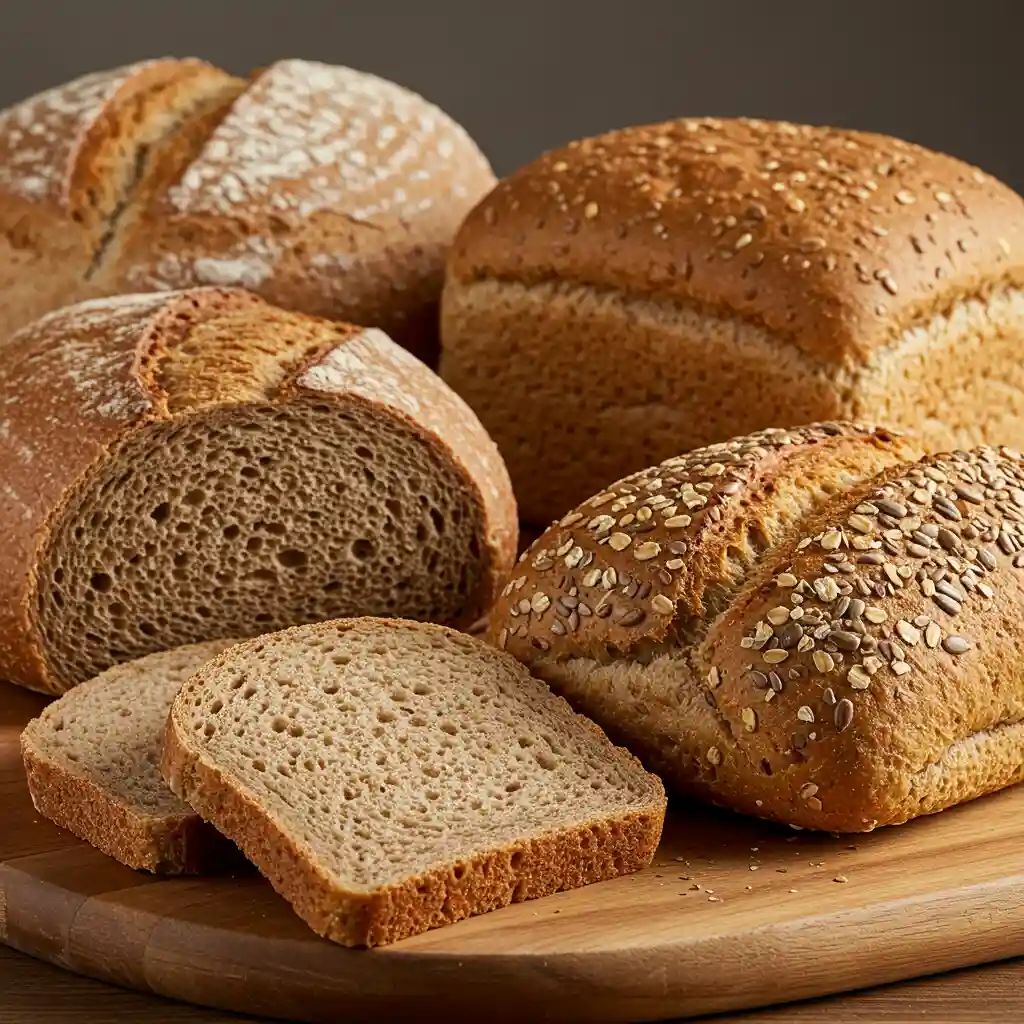
Essential Ingredients for Homemade Whole Wheat Bread
To bake whole wheat bread, you’ll need key ingredients: whole wheat flour, water, yeast, salt, and a sweetener like honey or molasses to feed the yeast. Some recipes also include olive oil or butter for moisture and flavor. Using 100% whole wheat flour ensures your bread retains all the nutritional benefits.
Step-by-Step Guide to Making Whole Wheat Bread
Start by activating your yeast in warm water mixed with a little sweetener. Then, combine your whole wheat flour, salt, and yeast mixture, kneading until smooth. Let the dough rise in a warm place until it doubles in size. Punch it down, shape it into a loaf, and allow a second rise before baking at around 350°F (175°C) for 30-35 minutes. The result? A hearty, aromatic loaf of whole wheat bread fresh from your oven.
Tips to Improve Texture and Flavor of Homemade Whole Wheat Bread
Whole wheat flour can make bread denser than white flour, but you can lighten it by adding vital wheat gluten or blending in some bread flour. Adding a bit of honey or molasses not only helps yeast activity but adds a subtle sweetness. Using a warm environment for rising and not over-kneading also improves texture.
Storing Homemade Whole Wheat Bread for Freshness
Store your homemade whole wheat bread in a bread box or wrapped in a cloth at room temperature to keep the crust crisp while maintaining softness inside. For longer storage, slice and freeze the bread, then toast or warm slices as needed.
“Craving more delicious recipes? Follow me on Facebook, Pinterest, and Medium!”
Comparing Whole Wheat Bread to Other Bread Types
Understanding how whole wheat bread stacks up against other popular bread varieties can help you make healthier choices. This section compares whole wheat bread with white bread, multigrain bread, and gluten-free options.
Whole Wheat Bread vs. White Bread: What’s the Difference?
Whole wheat bread uses the entire wheat kernel, including bran and germ, making it richer in fiber, vitamins, and minerals. White bread, on the other hand, is made from refined flour, stripping away most nutrients and fiber. As a result, whole wheat bread has a lower glycemic index, helping to stabilize blood sugar and keep you fuller longer.
How Does Whole Wheat Bread Compare with Multigrain Bread?
Multigrain bread contains multiple types of grains, but that doesn’t always mean it’s whole grain. Some multigrain breads use refined flours mixed with grains, so checking the label is crucial. Whole wheat bread made with 100% whole wheat flour generally provides more consistent fiber and nutrient content than many multigrain breads.
Is Gluten-Free Bread Healthier Than Whole Wheat Bread?
Gluten-free breads cater to those with gluten intolerance or celiac disease, but they often use refined starches and lack fiber and nutrients found in whole wheat bread. Unless you have a medical reason, whole wheat bread is usually the healthier choice for most people.
Nutritional Comparison Table: Whole Wheat Bread vs Other Breads
| Bread Type | Fiber (g per slice) | Protein (g) | Glycemic Index | Key Nutrients |
|---|---|---|---|---|
| Whole Wheat Bread | 3-5 | 4 | Low-Medium | B vitamins, iron, magnesium |
| White Bread | 0.5-1 | 2-3 | High | Few nutrients, mostly refined |
| Multigrain Bread | 2-4 | 3-4 | Medium | Variable, depends on grains |
| Gluten-Free Bread | 1-2 | 2-3 | Medium-High | Often low fiber, less vitamins |
FAQs About Whole Wheat Bread
To wrap up our comprehensive guide on whole wheat bread, let’s answer some of the most common questions people ask about this nutritious staple.
Is Whole Wheat Bread Healthiest?
Whole wheat bread is generally considered one of the healthiest bread options because it retains the whole grain, including fiber, vitamins, and minerals. This helps with digestion, blood sugar control, and heart health. However, always check for 100% whole wheat labeling to avoid added refined flour.
Which Bread is 100% Whole Wheat?
Bread labeled “100% whole wheat” or “100% whole grain” means all the flour used is from the entire wheat kernel. Avoid breads that just say “wheat bread” or “multigrain” as they may contain refined flours. Reading the ingredient list is key.
Is Whole Wheat Bread a Good Carb or Bad Carb?
Whole wheat bread is a good carbohydrate. It provides complex carbs with fiber that digest slowly, giving sustained energy and preventing blood sugar spikes. In contrast, refined carbs in white bread can cause quick sugar crashes.
Can I Eat Wheat Bread if I Have High Cholesterol?
Yes, whole wheat bread can be part of a heart-healthy diet. The fiber in whole wheat helps lower LDL (bad) cholesterol and supports overall heart health. Always combine it with other healthy lifestyle habits for best results.
Is It OK to Eat Whole Wheat Bread Everyday?
Eating whole wheat bread every day is fine for most people if it fits into a balanced diet. It’s rich in nutrients and fiber that support digestion and energy. Just watch portion sizes and avoid breads with added sugars or preservatives.
What is the Healthiest Bread in the World?
While whole wheat bread is very healthy, some might argue that sprouted grain breads or breads made with ancient grains like spelt or einkorn offer even more nutrients and digestibility. Still, 100% whole wheat bread remains one of the top choices for health benefits and accessibility.
Conclusion: Why Whole Wheat Bread Should Be Your Go-To Choice
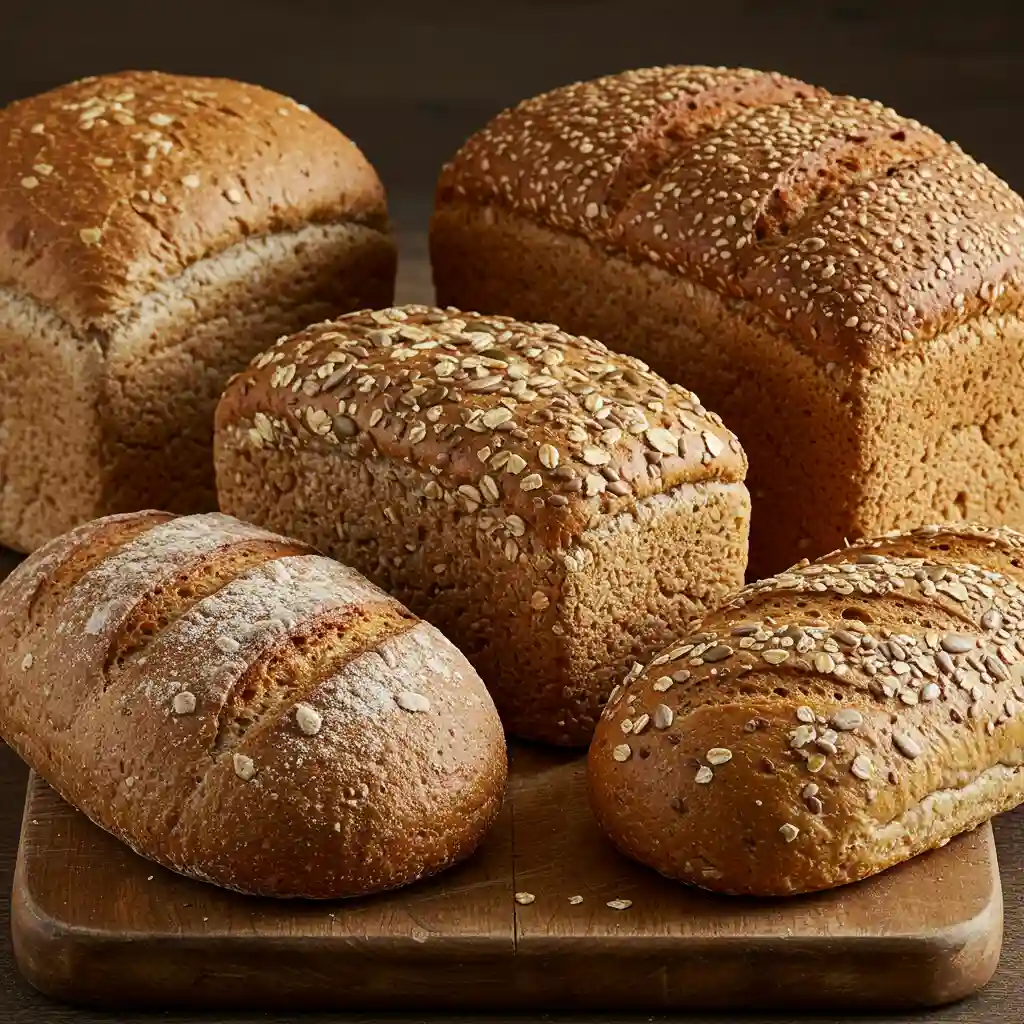
Whole wheat bread stands out as a nutritious, delicious, and versatile option that can fit seamlessly into your daily diet. Packed with fiber, vitamins, and minerals, it supports digestion, heart health, and sustained energy levels. Unlike refined breads, whole wheat bread provides complex carbohydrates that help keep blood sugar steady and promote overall wellness.
Whether you’re looking to manage cholesterol, improve your diet quality, or simply enjoy wholesome flavors, whole wheat bread offers a healthy, practical choice. Remember to always check labels to ensure you’re choosing 100% whole wheat varieties for maximum benefits.
Incorporating whole wheat bread into your meals doesn’t have to be boring—try it toasted with avocado, as a sandwich base, or even in homemade bread recipes to experience its full potential.
Embrace whole wheat bread as a staple, and enjoy a better, healthier lifestyle—one slice at a time.
Don’t miss our detailed guide on healthy eating habits and meal ideas featuring whole wheat bread here
Did You Try Our Recipe?
There are no reviews yet. Be the first one to write one.



